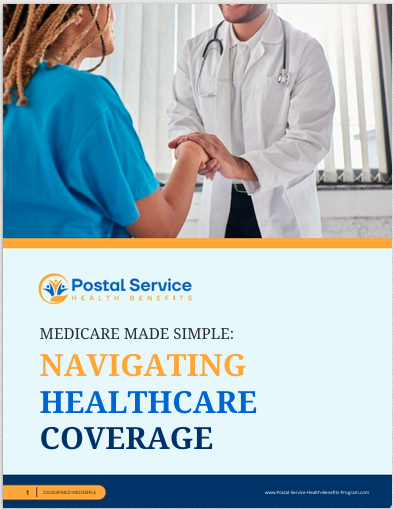Key Takeaways
• Understanding your PSHB copayments can help you manage healthcare costs more effectively.
• Reviewing copayment structures for different services ensures you choose the right plan for your needs.
What Are PSHB Copayments and Why Do They Matter?
As a Postal Service employee or retiree, your healthcare coverage under the Postal Service Health Benefits (PSHB) program comes with various out-of-pocket costs, including copayments. A copayment is a fixed dollar amount you pay for specific medical services, such as doctor visits, prescription drugs, or urgent care. These costs can vary significantly depending on your chosen plan and the type of service you receive.
Understanding copayments is crucial because they directly affect how much you pay for healthcare services throughout the year. Whether you are scheduling a routine check-up or need emergency medical attention, knowing your copay obligations can help you avoid unexpected expenses and plan your budget accordingly.
1. Comparing Copayments for Different Types of Care
Not all healthcare services have the same copayment amounts. Some services require higher out-of-pocket costs than others, so knowing what to expect can prevent surprises when you receive medical care.
Primary Care vs. Specialist Visits
Visiting your primary care provider (PCP) usually comes with a lower copayment compared to seeing a specialist. If you require frequent specialist visits, such as for ongoing medical conditions, consider how these higher copays might impact your overall healthcare expenses.
Urgent Care vs. Emergency Room
Emergency room (ER) visits typically have higher copayments than urgent care centers. If you have a non-life-threatening condition, opting for an urgent care visit can save you money while still providing the treatment you need. However, in true emergencies, the ER remains the best option.
Prescription Medications
Copayments for prescription drugs vary based on whether the medication is generic, brand-name, or specialty. Generic drugs usually have the lowest copayments, while specialty drugs tend to be the most expensive. Reviewing your plan’s drug formulary can help you determine the best way to save on prescription costs.
2. Understanding How Copayments Impact Your Out-of-Pocket Maximum
Your PSHB plan includes an out-of-pocket maximum, which limits how much you spend on covered medical expenses in a given year. Once you reach this maximum, your plan covers 100% of eligible costs.
Copayments Count Toward Your Out-of-Pocket Limit
Every copayment you make for covered services contributes to your out-of-pocket maximum. This means that while copays may seem small individually, they can add up quickly, helping you reach your spending limit and qualify for full coverage sooner.
Balancing Copayments and Deductibles
Unlike deductibles, which require you to pay a set amount before insurance kicks in, copayments are due at the time of service. If you anticipate needing frequent medical care, choosing a plan with reasonable copayments can be more budget-friendly, even if the deductible is slightly higher.
3. Selecting a Plan That Matches Your Healthcare Needs
Since copayments can significantly affect your overall healthcare expenses, selecting a PSHB plan that aligns with your medical needs and budget is essential.
High vs. Low Copayment Plans
Some plans have lower monthly premiums but higher copayments, while others have higher premiums with lower copays. If you rarely visit the doctor, a lower-premium plan with higher copayments might make sense. However, if you require frequent medical care, a plan with higher premiums but lower copays could save you money in the long run.
Family Coverage Considerations
If you are covering dependents under your PSHB plan, consider their healthcare needs as well. Multiple doctor visits for children or dependents with chronic conditions can result in high cumulative copayments, making a plan with lower copays a better choice.
Checking Network Providers
In-network providers generally have lower copayments than out-of-network providers. Before selecting a plan, review the network of covered doctors and hospitals to ensure you have convenient and affordable access to healthcare providers.
4. Planning for Copayments Throughout the Year
Budgeting for healthcare costs is just as important as managing everyday expenses. Planning ahead for copayments can help you avoid financial strain when medical needs arise.
Using Health Savings Accounts (HSA) or Flexible Spending Accounts (FSA)
If your PSHB plan allows, contributing to an HSA or FSA can help offset the cost of copayments. These accounts let you use pre-tax dollars to cover qualified medical expenses, reducing your overall healthcare costs.
Tracking Medical Expenses
Keeping a record of your copayments and other medical expenses throughout the year can help you stay within budget. Some PSHB plans offer online tools or mobile apps to track healthcare spending, making it easier to monitor costs and adjust your financial planning as needed.
Reviewing Your Plan Annually
Healthcare needs can change from year to year, so it’s important to review your PSHB plan annually during Open Season. If your medical needs have increased, switching to a plan with lower copayments may be a wise decision.
Making Informed Decisions About Your PSHB Coverage
Understanding your PSHB copayments can make a significant difference in managing your healthcare costs. By comparing copayments for different services, considering how they contribute to your out-of-pocket maximum, selecting the right plan, and planning for expenses throughout the year, you can make informed decisions that align with your healthcare needs and budget.
If you need assistance reviewing your PSHB options, speaking with a licensed agent listed on this website can help you understand the details of each plan and make the best choice for you and your family.






